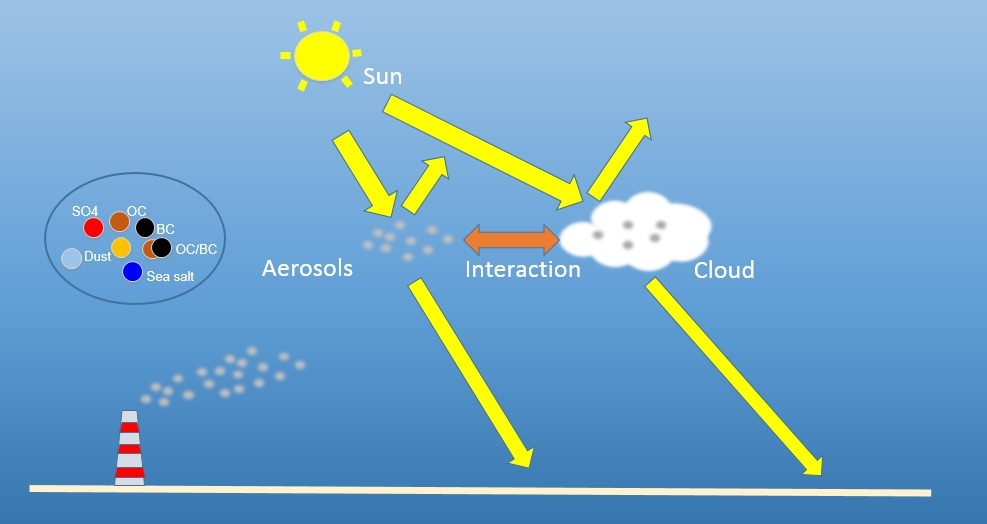
Atmospheric aerosols can exert effects on climate, environment and health. However, due to the lack of comprehensive understanding of the interaction mechanism between the aerosol and cloud, there exists deep uncertainty in the estimation of climatic and environmental effects caused by the anthropogenic aerosol.
The online coupled aerosol climate model is an important tool to reduce the uncertainty and help scientists understand how the aerosol impacts the climate and environment.
Recently, the Institute of Atmospheric Physics (IAP) of the Chinese Academy of Sciences, through long-term cooperation with the National Institute for Environmental Study of Japan, Kyushu University and the Japan Aerospace Exploration Agency, has implemented an aerosol module named SPRINTARS into the global coupled climate model CAS FGOALS-f3.
"CAS FGOALS-f3 is independently developed by Chinese scientists. Its previous version uses the prescribed aerosols and cannot depict the process of aerosol cycle and the cloud-precipitation-radiation-dynamic interactions. Our work makes up for these disadvantages," said Dr. DAI Tie, the corresponding author of the series of studies published in Journal of Geophysical Research: Atmospheres and Atmosphere. "The global fully aerosol coupled model CAS FGOALS-f3 can simulate the life cycles of the multiple aerosol components, including carbonacesous aerosols, dust, sulfate, and sea salt."
DAI and his PhD student WANG Hao compared the model simulated results with the ground and multi-source satellite observations and found that the new coupled model could reasonably reproduce the spatial distributions of the global aerosol surface mass concentrations and the associated optical properties.

Schematic diagram of the coupled framework of aerosol modules and climate models. (Image by WANG Hao)
"In addition, based on the protocol of current Coupled Model Intercomparison Project phase 6, we also found that the new coupled model can reasonably reproduce the global spatial distributions of the effective radiative forcing of aerosol-radiation interactions and aerosol-cloud interactions," said DAI. DAI and his team will use this coupled climate system model to study the impact of aerosol on climate and environment and contribute to realize China's carbon neutrality.
This work was supported by the National Natural Science Funds of China, the Youth Innovation Promotion Association CAS, the Strategic Priority Research Program of the Chinese Academy of Sciences, and the National Key R&D Program of China.

86-10-68597521 (day)
86-10-68597289 (night)

52 Sanlihe Rd., Xicheng District,
Beijing, China (100864)

